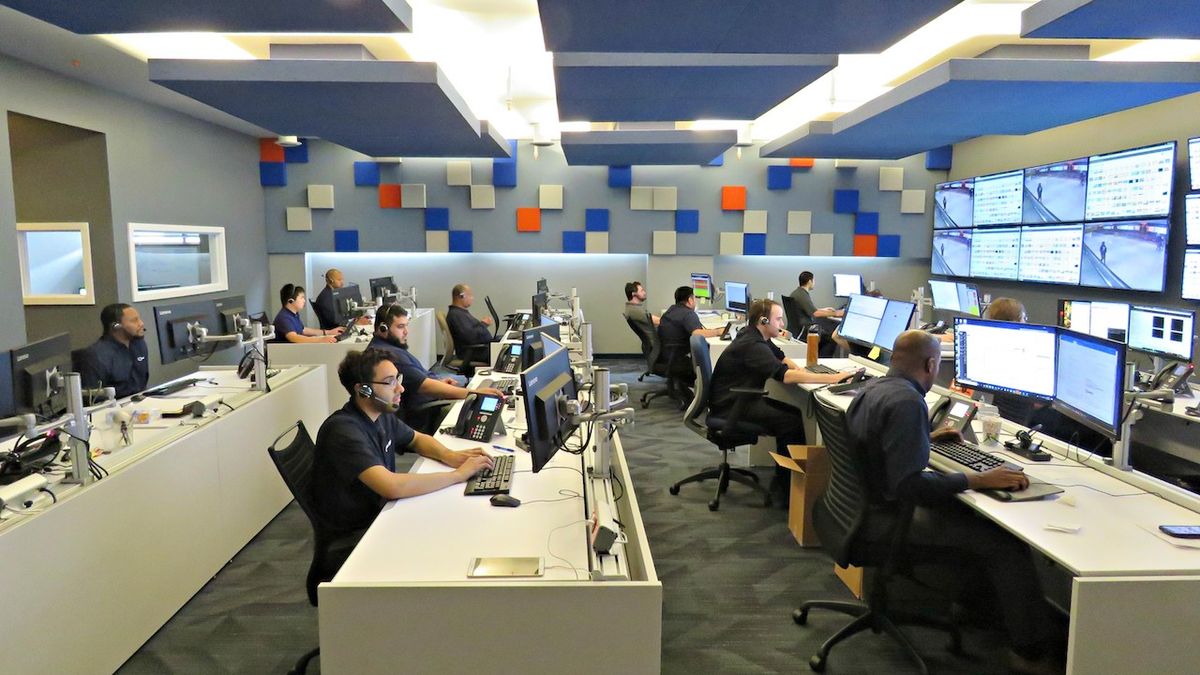With the move to networked equipment running over IP, today’s AV facilities have become more complicated for AV managers to maintain. This is because they are now taking care of complex software-driven computer equipment and virtual connections rather than the standalone components and hard-wired switches that most were trained on. These managers didn’t sign up to be IT professionals, but now they are.
This is precisely why many organizations that use IT-based AV are turning to managed services to keep their AV facilities operational and up to date.
Provided by AV integrators and installers, often the same people who built the customers’ existing facilities, “managed services are basically whatever services that a customer requires,” said Charmaine Torruella, Verrex’s GMS account manager. “It doesn't require hardware per se. It's just really providing an AV service to the customer that they really don't have the bandwidth to manage themselves.” This can include tracking the data carried and generated by the customer’s IP-based AV equipment and connections.
“There are multiple benefits to organizations leveraging managed services,” said Laurie Berg, AVI-SPL’s director of product management. “Customers utilize our services to reduce tech and real estate costs, enhance end-user meeting efficiency and productivity, focus on core business, improve vendor management, and enable scalability with new technologies and resources.”
How Managed Services Can Help
The basic logic behind managed services—which are typically provided in exchange for a regular subscription fee—is to free AV managers from the ongoing monitoring, maintenance, and repair of their networked AV equipment.
Being networked means that this equipment can now be monitored and tweaked remotely by managed services providers like AVI-SPL, Whitlock, Verrex, and Diversified. Support technicians can also be sent onsite as soon as a physical issue is detected, rather than waiting until someone at the customer premises notices it.
“We’re constantly watching remotely for faults in any piece of our customers’ AV devices,” said Will Amos, director of Diversified’s Digital Media Group. “We also have agents (diagnostic software programs) already deployed and connected to these devices, so that we can troubleshoot problems and fix from our network operations center.”
Having a third-party integrator/installer provide managed services also eliminates the need for a customer’s own AV department to keep up with every new equipment upgrade and software update.

“It makes sense for AV managers to rely on managed service provider because we’re constantly retraining and recertifying on the equipment they’re using,” Torruella added. “We're always learning about upgrades. We're always learning about new technology.”
Customers Want More
Now that managed services are catching on, many AV customers are moving past remote monitoring/maintenance and onsite repairs to demand more from their managed service providers.
“We’re seeing three shifts in this space,” said John Bailey, Whitlock’s vice president of technology. “First, customers want to have visibility and support for their systems over the entire enterprise—on a local, national and global level.” This kind of visibility is something that Whitlock and other managed services providers are able to provide, thanks to their remote monitoring infrastructures.
Second, “customers increasingly see the benefits of standardized end-user adoption training,” Bailey said. Adoption training focuses on end users actually embracing and utilizing technology to achieve their goals, instead of simply training them on how to use the systems.
Third, “we offer online solutions catalogs that are tailored to a customer’s technology standards,” Bailey said. “Those catalogs are secure, integrated into the customer’s purchasing systems and workflows, and populated with predefined and budgeted solutions that significantly speed up new system deployment, while also reducing the cost and complexity of traditional supply chain models.”
Managed services providers are stepping up to meet these additional demands. But they are also offering new services that customers may not have thought of. A case in point: “We can go beyond monitoring whether a display is on or off to keeping an eye on operating temperature in media servers and other heat-sensitive devices,” Amos said. “This allows us to react to potential issues before they led to failures.”
Keeping an eye on such metrics is a growing responsibility/opportunity for managed services providers. “Networked systems open up many new possibilities in how we help customers look after their ‘technology estates,’” Bailey said. “The most basic metrics include the collection and monitoring of device data like usage, uptime, and device health. Our goal is to give AV managers fewer channels of information to deal with—ideally a single ‘pane of glass’ with which they can manage the entire facility, campus, or global enterprise.”
Predictable Costs
Managed services provide AV managers with predictable maintenance costs (barring unforeseen equipment replacements). This is better then coping with unpredictable and unbudgeted repair bills whenever something goes wrong.
The result: “With the ability to utilize a subscription-based model, organizations can budget and plan accordingly,” Berg said. “Meanwhile, they gain the benefits of having signed support and maintenance service level agreements (SLAs) that fit their specific needs.”
Growing Demand
The many advantages outlined above explain why managed services have been gaining traction among AV users.

“We are seeing accelerated market demand for the full spectrum of managed services,” Bailey said. “Both remote and onsite services have become the norm for customers, when just a few years ago, they were considered options or potential ‘nice to haves.’”
“The demand for services has increased, but it has also evolved,” Berg said. “Technology is changing, all with a key focus on the user experience. It is no longer enough to bring collaboration solutions and technologies to the end users, and it is no longer enough to have cost savings. The end user must have a positive user experience, to increase usage and adoption.”
The AV sales cycle is also driving demand, with many customers trying to maximize the lifespan of their current equipment until money is allocated for the next refresh. “The time when customers don’t have capital for a rebuild is when they lean more on service,” Torruella said. “This when they turn to managed services providers like Verrex.”
Finally, AV managers are getting smarter in how they manage their facilities, with their goal now being to maximize system availability. “In the past, customers would call us when they had black screens or other catastrophic failures, which they hoped to cover under warranty,” Amos said. “They still do this, but increasingly they are looking for proactive solutions that can keep this from happening, and keep their AV facilities available for use more often.”
The Bottom Line
Using managed services providers gives AV managers a way to ensure that their AV facilities offer maximum uptime and minimal problems, based on regular payments that are predictable, and ideally, budget-friendly. Managed services free AV managers to focus on day-to-day customer service in their organizations, and reduce the number of unexpected failures and content delivery interruptions to users. This is why managed services are growing in popularity in AV, and are likely to continue to grow in the foreseeable future.













